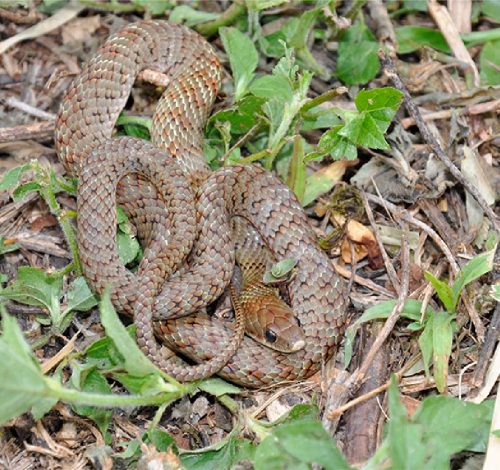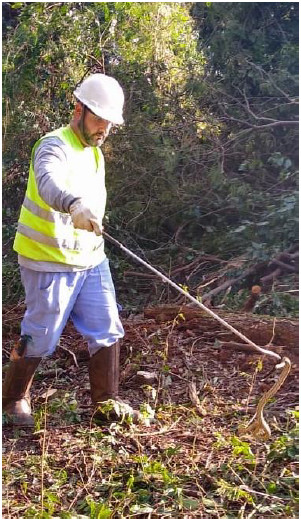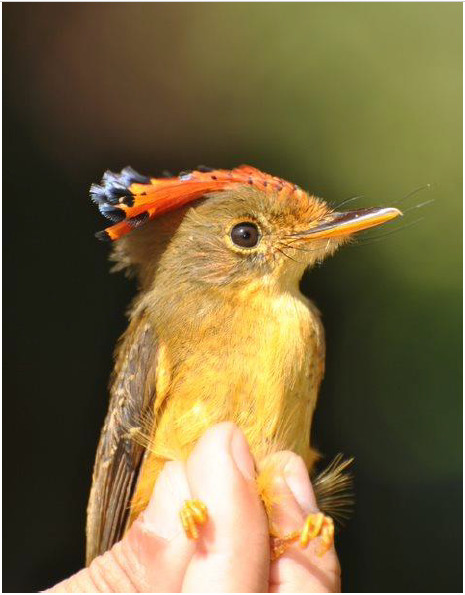Land Fauna
Committed with preventing, minimizing and offsetting negative impacts of its activities on biodiversity, Copel develops a range of environment programs aimed at land fauna conservation.
Actions include previous studies to new undertaking deployment, and fauna chase away and rescue and monitoring program development, which purpose is identifying the region species, setting forth every control measure required, fostering fauna safekeeping, and whenever required, performing actions aimed at endangered species conservation.
Moreover, other environment programs enable land fauna conservation directly, including the ones focused on degraded area recovery, forest environment deployment and preservation, inspection and monitoring included in Copel area.

Fauna Rescue and Monitoring
Copel performs Fauna Rescue, Salvation and Destination Programs whenever they are proposed in environment surveys, or they are restraining part of the undertaking installation environment agency.
In activities including vegetation cut and reservoir filling, fauna habitats can be impacted, so programs are developed that aim to reduce the impacts in the wildlife.
Programs are executed by means of a qualified team, that uses fauna management techniques, with safety protocols. In these situations, it is preferred that the animal runs away from the impacted areas on its own, and escape measures are being developed for that.
The animal is rescued, whenever it cannot escape without assistance. Upon rescue, the animals in good health conditions are released in safe areas, if required, the veterinary service takes place. In the cases return to nature is not possible, they shall be forwarded to specialized institutions.
Lectures and meetings are held with work deployment team, to explain fauna relevance and program execution, orienting and making employees shall care for fauna preservation in their work routines.


Monitoring in Copel areas
Fauna monitoring is an essential tool to enhance knowledge and set forth conservation and endangered species strategies. The goal, within Copel undertaking deployment and operation scope, is identifying occasional environment impacts incurring from the activities, especially in the most relevant areas for biodiversity conservation.
Fauna monitoring activities consist of undertaking environment licensing legal requirements and generate essential information, and they are often not known yet about local fauna species, as in the case of fauna monitoring programs for LT 500 kV Araraquara – Taubaté, Colíder Hydroelectric Power Station and Mauá Hydroelectric Power Station.
Fauna Conservation and Monitoring Subprogram was released in August, 2010, to monitor four land vertebrate animal groups (amphibians, reptiles, birds and mammals) within Colíder Hydroelectric Power Station direct and indirect influence area, during its construction and operation stages. It relies on quarterly campaigns in three sampling areas, that started in 2011 and it is foreseen to be completed in 2023, totaling 44 campaigns, and 24 of them were performed in pre-filling stage, and 20 in power station operation stage.
The 34 campaigns have already been performed and the wealth achieved was very meaningful totaling 849 species registered, with 158 herpetofauna species (amphibians and reptiles), 547 bird species and 144 mammal species. The monitoring registered species that were not widely known by the science, some of them typical of the Amazon region, including spider monkeys (Ateles chamek and A. marginatus), sauá or zogue-zogue (Callicebus moloch) and migrating species, including greater yellowlegs (Tringa melanoleuca) and also others not expected to the biome.
Mauá, currently Jayme Canet Junior Hydroelectric Power Station, fauna monitoring started in January, 2010, which purpose was assessing the vegetation suppression and reservoir filing impact on the region fauna, by means of bird, reptile, mammal and amphibian community diagnosis and follow-up. The survey performed samplings that considered significant environment variables to attempt to identify the impact direct effects on the fauna.
Data collection was performed in three independent areas: two within the power station direct influence area and another one further away, around 15 km from the other ones. The project was completed in April, 2015.
Apart from this project, a specific monitoring program was executed in the region for some species considered with conservation interest, performed between 2013 and 2014. Further details on such project results can be found in the reports provided below.




